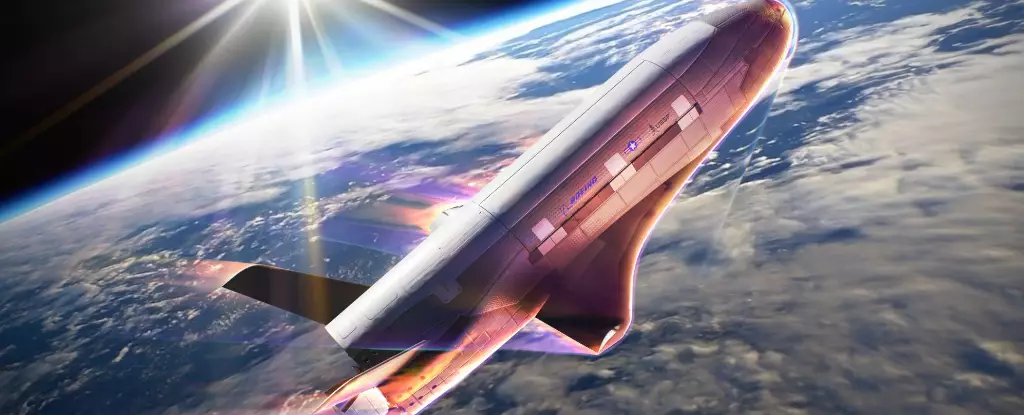Since its introduction to the world in 2011, the X-37B Orbital Test Vehicle (OTV) has sparked intrigue and speculation. Developed by Boeing and managed by the United States Space Force (USSF), this reusable space plane is engineered to function in Low-Earth Orbit (LEO), ranging from 240 to 800 kilometers (150 to 500 miles) above the planet. In a striking demonstration of its capabilities, the X-37B initiated its seventh mission, designated OTV-7, on December 29, 2023. This mission has been closely monitored, given the vehicle’s unique nature and its potential implications for national security and space exploration.
The OTV-7 mission is not merely a repetition of past endeavors; it includes a comprehensive suite of experiments, primarily focusing on the impact of space radiation and the advancement of Space Domain Awareness (SDA) technologies. These experiments are particularly significant as they aim to enhance the USSF’s capacity to administer space operations effectively while simultaneously safeguarding national interests from potential threats. A highlight of this mission is the use of aerobraking maneuvers, wherein the X-37B will skim the Earth’s upper atmosphere to slow down and alter its orbit—an innovative method that minimizes fuel consumption and boosts operational efficiency.
Aerobraking techniques are not new; they have historical roots in past interplanetary missions such as the Mars Global Surveyor. However, the implementation of this maneuver by the X-37B marks a groundbreaking moment that could redefine how military spacecraft conduct operations. The ability to stealthily alter its trajectory when on the cusp of the atmosphere could allow the X-37B to avoid detection, consequently enhancing its strategic advantages.
A particularly fascinating aspect of the X-37B’s design is its capability to operate under the radar. Former U.S. Air Force Secretary Heather Wilson emphasized this during the 2019 Aspen Security Forum, highlighting its elliptical orbit, which allows it to approach the Earth undetected. According to her insights, this unpredictability creates a tactical advantage that keeps adversaries guessing. Underscoring this notion, Jonathan McDowell, an astronomer at the Harvard-Smithsonian Center for Astrophysics, noted that even minor adjustments in timing following atmospheric maneuvers complicate tracking efforts for adversarial nations. This stealth capability could be a game-changer given the increasing militarization of space.
The mist surrounding the X-37B’s objectives also draws attention. While the USSF has disclosed limited information about its capabilities, those in the defense and aerospace fields speculate that the OTV-7 mission could significantly impact America’s strategic position in space. Does this vehicle symbolize the vanguard of new military capabilities that may forever alter how nations engage in space operations? The ambiguity surrounding its purposes fuels ongoing debates concerning the role of military assets in this challenging new frontier.
In addition to its experimental pursuits, the X-37B is slated to engage in responsible space practices. As part of its mission obligations, the spacecraft will dispense certain service module components as part of a commitment to recognized space debris mitigation standards. This responsible approach marks a proactive stance in addressing one of the most pressing issues facing today’s space efforts: orbiting debris. As satellites and other objects accumulate in space, the risk to both operational assets and the broader space environment escalates, necessitating action from all players in this arena.
The culmination of the OTV-7 mission and the successful execution of novel maneuvers foster optimism about the potential for future advancements in military space operations. According to USSF leadership, such efforts underscore a tenacious commitment to innovation, security, and technical excellence within the realm of space exploration. As Secretary of the Air Force Frank Kendall articulated, the pioneering nature of the X-37B’s maneuvers signal a crucial evolution in the US military’s capabilities.
As the X-37B completes its current mission and prepares for eventual landing, anticipation builds regarding its findings and the implications they may hold for future endeavors. As military and civilian sectors converge more in the exploration of space, the lessons gleaned from the X-37B’s journey may well influence the trajectory of space governance, technology, and strategy in years to come. The United States’ resolute approach to securing its interests in space not only underscores national security priorities but also sets the stage for collaborative international dialogue concerning the responsible use of space as a shared domain.

